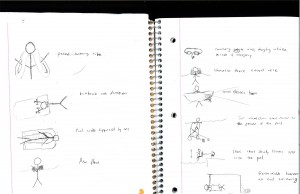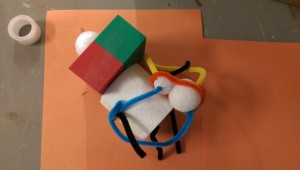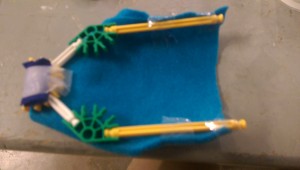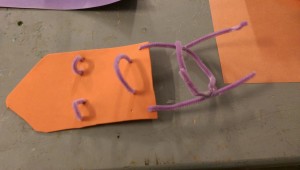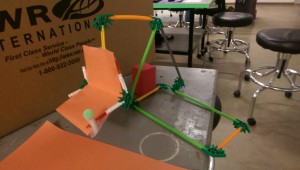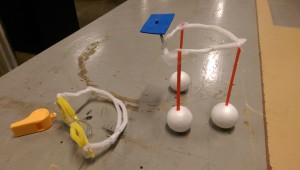Here are my sketches for the project. The sketching process was really helpful as my final creations were all created by modifying and adding together these individual ideas.
There were a couple notes of interest during the building process. First off, duct tape was MVP. For someone like me who lacks both creativity and technical expertise, duct tape was my solution if anything needed to be attached to anything else. There were many spots where glue would have been a better choice, but I found that glue didn’t work on many of the available materials. So duct tape it was.
There was also a scarcity of supplies. The K’nex for example ran out very quickly. When I went to the ODEK on friday to start my project, only two other people had started their’s, but the K’nex were almost all gone. Maybe there weren’t that many to begin with. Either way, they are the only supplies we really have for constructing mechanisms, so it makes sense that they would be popular in a project that involves swimming equipment.
Model 1
My first model is a combination of two individual ideas. The red and green block around the model’s neck is a flotation device to keep the user afloat. The blue and yellow are fitted swimming tubes that go around the user’s arms to help support the first device and give the user greater mobility options.
Model 2
This model is essentially a recliner for swimming. The user lays down on the blue membrane and leans their head on the purple pillow. The membrane dips down so the user will be in water, but the supports the membrane is attached to will keep the recliner afloat.
Model 3
This was my “kickboard with straps” idea with some influence from the retractable harness idea. The orange piece is a swimming board with straps to secure the user. The two straps in the front are arms while the one in the middle is for the head. The harness in the back secures the body into place.
Model 4
In addition to swimming, I felt like disabled people also have trouble accessing the pool. This is a seat that moves the user in and out of the water easily. It can be controlled by the user via the green handle next to the seat or by an external personnel via the red control box in the back.
Model 5
This final model is another combination of ideas. The device on the right is essentially “swimming tube wheelchair”. The white circle represents the swimming tube while it has three extendable legs that reach the pool floor. The device on the left is swimming goggles attached with a whistle. I figured that because Liam cannot speak, it would be worrying if there was an emergency and he couldn’t communicate that. So the whistle would give him a way to ask for assistance if anything goes wrong. The swimming tube comes with a blue holder for the whistle to allow Liam to access it with his mouth without the use of hands.
I thought low-fidelity prototyping is a really interesting concept. It allows us to both be creative and use a hands-on approach to implement that creativity. Plus, it was pretty fun to mess around with all the different materials we had at our disposal.
However, I wasn’t the biggest fan of the project. I felt that designing swimming equipment for a specific disabled child was both too technically complex and limiting in scope. Maybe it was just me, but I had a hard time coming up with feasible solutions that actually makes sense given the many restrictions we had to consider. I also wasn’t really satisfied with my solutions. The more I thought about some of them, the more I feel like they don’t really make sense, and that kinda bothers me. Looking back onto last semester’s project of clearing trash out of the bayou system, I felt like that was a more interesting project that could birth many diverse solutions. Again, it might just be because I’m not creative or skilled enough.
